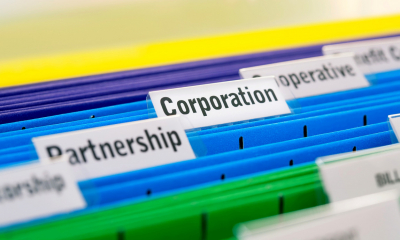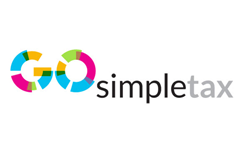
What are tax codes? Who should have a tax code and what should your tax code be? We answer your frequent questions on tax codes
What is a tax code?
Does everyone have a tax code?
Do I have a tax code if I am self-employed?
How is my tax code worked out?
How do I calculate how much tax I should pay using my tax code?
How do I find my tax code?
Can my tax code change?
What is an emergency tax code?
How do I get a refund if I have been given an emergency tax code?
How do I check my tax code is right?
How do I change my tax code if it is wrong?
Why has my tax code changed to S?
What should my tax code be?
What is a tax code?
Your tax code is issued by HM Revenue & Customs. The tax code is used by your employer to work out how much tax to deduct from your pay under PAYE. Tax codes are also used by pension providers to deduct tax from pension payments.
A typical tax code has two parts:
- A number, which is one tenth of the amount of tax-free pay you are allowed during the year.
- One or more letters, giving more detail on how your pay should be taxed. For example, the letter L means you are getting the standard personal allowance, while the letters NT mean that this income is not taxed at all.
There are some other tax codes which are just letters. For example, the tax code BR means that all your income is taxed at the basic rate.
Does everyone have a tax code?
HMRC provides a tax code if anyone needs to know how much tax to deduct before they pay you.
- If you are an employee, you will have a tax code;
- If you are self-employed, and all your income is taxed through self assessment, you will not have a tax code;
- If you are both employed and self-employed, you will have a tax code;
- If you have more than one job (as an employee), you will have a tax code for each job. Your income from each job might be taxed differently.
 Have you missed the Self Assessment deadline?
Have you missed the Self Assessment deadline?
For self-employed individuals, sole traders, or those with non-PAYE income, GoSimpleTax provides direct Self Assessment filing with HMRC, offering helpful hints and savings tips throughout the process. Let GoSimpleTax handle all calculations, saving you ££’s in accountancy fees.
Do I have a tax code if I am self-employed?
If all your income is taxed through self assessment, you will not have a tax code. But you will have a tax code if you:
- pay yourself through a company;
- have other income through PAYE (for example, a part-time job) or a private pension.
How is my tax code worked out?
Your tax code takes into account:
- what personal allowance you are entitled to;
- whether you also have income from another job;
- an estimate of what other income HMRC expects you to have that isn't taxed - for example, if you receive savings interest of over £1,000;
- any taxable benefits you receive (like health insurance or a company car);
- whether you are due a tax refund or owe HMRC tax.
If your tax code starts with numbers, they represent a tenth of the tax-free allowance to be used working out your tax. For example, a tax code beginning 1257 means that you have a tax-free allowance of £12,570.
How do I calculate how much tax I should pay using my tax code?
It depends on what tax code you have. If your tax code is a number followed by L, M, N or T:
- multiply that number by ten to get your tax-free allowance for the year;
- deduct that amount from your annual income (from that job);
- over that up to £37,700 is taxed at the basic rate of 20%;
- between £37,700 and £125,140 is taxed at the higher rate of 40%.
- over £125,141 is taxed at the additional rate of 45%.
Other tax code letters mean that your income from this job is treated in a different way. For example:
- BR means that all your income is taxed at basic rate;
- NT means that your income isn't taxed at all;
- K means that you have untaxed income worth more than your personal allowance, so extra tax needs to be collected.
How do I find my tax code?
You can check your tax code in your online personal account.
You should also be able to find your code on PAYE paperwork from your employer - for example, your payslips, annual P60 tax summary or the P45 you get when you leave a job.
If you are receiving a private pension, you should get an end of year certificate from the pension provider telling you what tax code they are using.
Can my tax code change?
Yes. Tax codes typically change:
- each year, to reflect any changes in the personal allowance;
- if HMRC gets new information from your employer, for example about the employment benefits you receive;
- if HMRC calculates that you have over or underpaid for a previous year;
- when you have been put on an emergency code for a new job, until your employer gets an updated tax code;
- if you give HMRC new information that means they should change your code.
What is an emergency tax code?
An emergency tax code is typically issued when you start a new job. It is a temporary code that is used until your employer has details of your previous income. There are several different codes, depending on your circumstances.
- An emergency code of 1275L followed by W1, M1 or X means that your tax will be worked out using the standard personal allowance (£12,570). But each time, the calculation is done as if this is the first week (or month or other pay period) in the tax year.
- An emergency code of BR means that all your income is taxed at the basic rate, without any personal allowance.
- An emergency code of 0T also means that you are taxed with no personal allowance - but at the higher or additional rate as well if your pay is high enough.
In practice, an emergency code may mean that you overpay tax.
How do I get a refund if I have been given an emergency tax code?
If you have been given an emergency code, you want to get this changed to the correct code so that the right amount of tax is deducted.
If you have a P45, you should give this to your employer. The P45 provides the information needed about your earnings and tax payments so far in the tax year.
Once your tax code has been corrected, your tax calculation will automatically be updated. If you have paid too much, HMRC will send you a refund.
How do I check my tax code is right?
When your tax code is changed, you should be sent a coding notice. This tells you what your tax code is and how it has been worked out.
You can also check your tax code online. Again, this tells you how your tax code has been worked out.
How do I change my tax code if it is wrong?
You can:
- give a new employer your P45 from your previous job, so that they can update you from an emergency tax code;
- contact HMRC online or by phone (0300 200 3300);
- ask your accountant to complete a PAYE Coding Notice query.
Why has my tax code changed to S?
An S tax code means that you are taxed using Scottish income tax rates. Scotland has had different income tax bands and rates since 2018/19.
What should my tax code be?
Your tax code reflects your particular circumstances. But for an individual who gets the personal allowance without any other adjustments, the tax code has been 1257L since 2019/20.
Content reviewed by Mike Parkes, technical director, GoSimple Software


